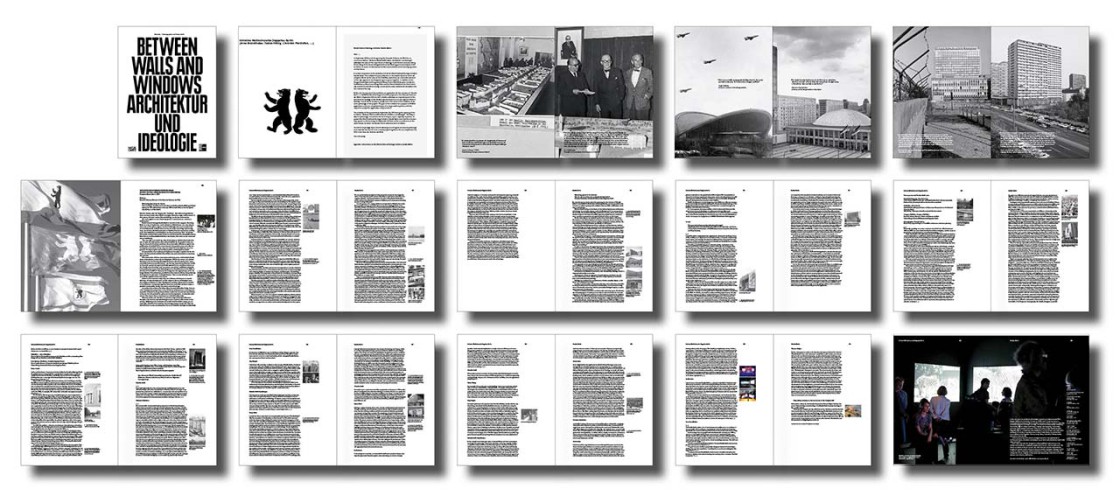- Typology
- Publication
- Project
- Doppeltes Berlin in Between Walls and Windows XXX
- Partner
Tobias Hönig with Arno Brandlhuber & Christian Posthofen
- Client
as "Initiative World Heritage Doubled Berlin"
- year
- 2012
- Location
- Hatje Cantz Verlag, Ostfildern, Baden-Württemberg, Deutschland
- Documentation of the contribution "Doppeltes Berlin" to the exhibition "Between Walls and Windows" at Haus der Kulturen der Welt (HKW) in Berlin.
- publisher
- Valerie Smith
 XXX
XXX
Fig.001Between Walls and Windows - Architecture and Ideology
Valerie Smith (Ed.)
Hatje Cantz, Ostfildern, 2012
ISBN 978-3-7757-3474-5© c/o now
 XXX
XXX
Fig.002Doppeltes Berlin in Between Walls and Windows.
© c/o now
Hatje Cantz: In 1958, the United States presented West Berlin with a congress hall, a “beacon of freedom transmitting its rays toward the East,” as its architect, Hugh Stubbins, defined his work. Today, the building accommodates the House of World Cultures, and the ideology of the Cold War has given way to intercultural rapprochement. What role did architecture play in this? How do buildings and lifestyles affect milieus, habits, attitudes, and morals? This publication is a collection of analyses, ideas, and literary narratives on the question of whether architecture can influence people, encourage them to pursue freedom, and empower them as citizens. Artists, photographers, architects, and writers address the richly historical House of World Cultures, creating a concept of architecture that contrasts global tendencies toward uniformity with the charm of regional characteristics, supplemented with texts by Adalbert Stifter, Jenny Erpenbeck, Tom McCarthy, Haruki Murakami, Georges Perec, and others.